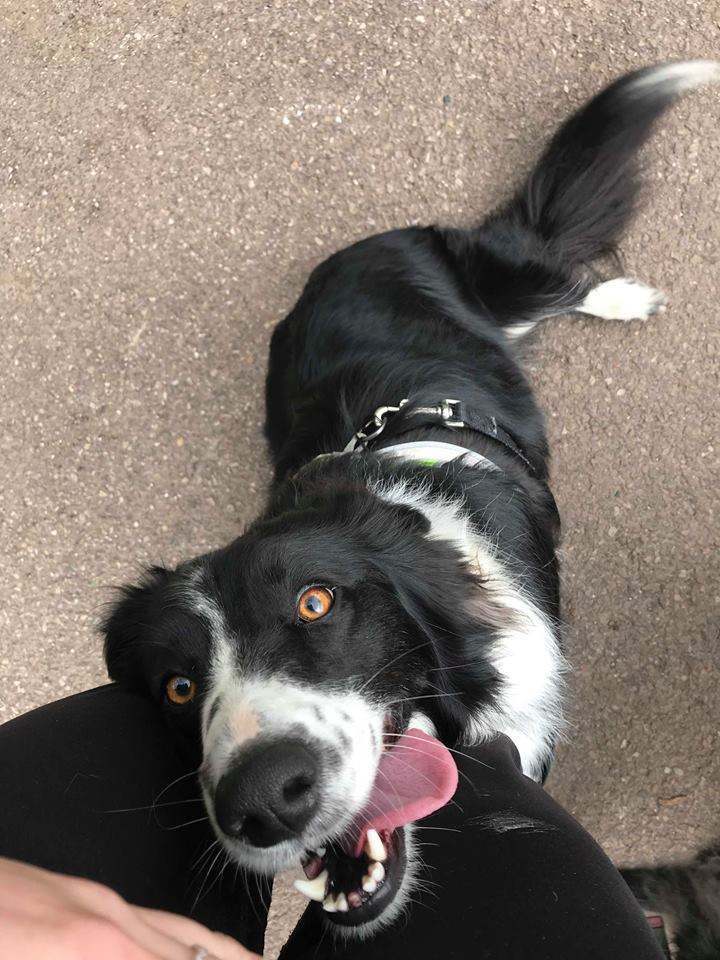Understanding Your Dog’s Needs: Lessons from Life with Fly
As a lifelong animal lover and dog mom to Fly, my energetic Border Collie, I’ve learned so much about what it takes to keep a dog happy, healthy, and loved. Today, I’m sharing tips on dog care that I’ve gathered through years of experience and research, plus some personal anecdotes about Fly, who, for better or worse, has taught me plenty about patience and joy.
1. Exercise and Play: Fueling Your Dog’s Spirit
Fly is obsessed with tennis balls. If she could, she’d chase one from sunrise to sunset. But exercise for dogs is about more than just burning energy. It’s also a mental challenge. For an active breed like Fly, keeping her mentally stimulated with toys, puzzles, and new walking paths is essential. Here are some ways to keep your dog engaged:
- Daily Walks: A walk twice a day does wonders. It gives dogs a chance to explore, sniff, and mentally engage with their surroundings.
- Playtime Variety: Rotate toys every few days, so each feels like a new adventure.
- Interactive Toys: Puzzle toys with hidden treats encourage problem-solving and reward curiosity.
Whether your dog is high-energy or more laid-back, finding activities that match their personality will enrich their lives and strengthen your bond.
2. The Importance of Routine Health Checks
Routine health checks are essential, especially for signs of aging or breed-specific issues. Fly’s vet appointments are non-negotiable, not only for vaccinations but to check her teeth, weight, and joint health. Here are a few tips to make health maintenance easy:
- Monthly Home Exams: Get your dog comfortable with basic exams. Check their ears, teeth, and paws regularly to spot early issues.
- Regular Grooming: For dogs with thick coats like Fly, grooming prevents matting and skin irritation. Brushing twice a week reduces shedding and keeps their coat healthy.
- Eye and Ear Care: Clean your dog’s ears monthly to prevent infections. For the eyes, look for any redness or discharge, especially in active dogs prone to dust and debris.
A proactive approach to health keeps unexpected trips to the vet at bay and ensures your dog stays in top shape.
3. Feeding and Nutrition: Finding Balance
Nutrition plays a significant role in keeping dogs healthy and happy. I’ve learned that feeding Fly involves more than just scooping kibble into a bowl—it’s about understanding what she needs based on her age, size, and activity level. Here are some tips for maintaining a balanced diet:
- Quality Dog Food: Invest in food that’s high in protein with quality ingredients. Dogs need a good mix of protein, fats, and carbs.
- Avoiding Overfeeding: It’s easy to overfeed, especially with treats. I use Fly’s love for tennis balls as a treat in itself—her reward is more playtime, not more snacks.
- Introducing Variety: Adding healthy, dog-safe fruits and veggies to meals keeps things interesting and adds valuable nutrients. Try carrots, blueberries, or pumpkin as a safe treat.
4. Socialization and Mental Health
Fly’s a character, but like many dogs, she can be wary of new situations. Socialization helps dogs build confidence, reduces anxiety, and keeps them mentally healthy. Here’s what works for us:
- Gradual Exposure: Introduce your dog to new people, environments, and other animals gradually. Fly’s early experiences with other dogs helped her develop good social skills.
- Creating a Safe Space: Dogs need a spot to retreat when they’re overwhelmed. Fly has her bed in a quiet corner where she can rest and recharge.
- Interactive Playdates: Arrange playdates with dogs of similar energy levels. A structured environment (like a fenced yard) provides safety while letting them bond.
Mental health is just as important for dogs as it is for us. By observing Fly’s reactions and respecting her boundaries, I’ve found ways to support her happiness and resilience.
5. Training with Patience and Positivity
Training Fly has taught me that dogs thrive on clear communication and consistent, positive reinforcement. Whether it’s basic commands or boundary training, positive reinforcement is key. Here are some methods that have worked well with Fly:
- Consistency: Using the same commands every time helps dogs understand and respond better. “Sit,” “stay,” and “come” were the first commands I taught Fly.
- Positive Reinforcement: Reward good behavior immediately, whether it’s with treats, praise, or a quick game of fetch.
- Patience: Dogs pick up on our frustration, so it’s important to stay calm, even when they’re having an “off” day.
6. Understanding and Embracing Your Dog’s Quirks
Every dog has their quirks, and Fly is no exception. She hates car rides but is perfectly content on my mobility scooter. And, of course, she has an intense love for barking at cats! Embracing these quirks is part of the joy of being a dog parent. Remember:
- Observe and Adapt: Notice what makes your dog happy or stressed, and adjust their routines to support them.
- Accept Uniqueness: Just like us, dogs have distinct personalities. Fly’s tennis ball obsession isn’t just a habit—it’s part of who she is!
- Celebrate the Bond: The love and loyalty we share with our dogs is one of life’s greatest joys. Cherish it, quirks and all.
Conclusion
Taking care of a dog is more than just meeting their basic needs; it’s about building a relationship based on trust, understanding, and joy. Fly has taught me countless lessons about patience, responsibility, and unconditional love. Through all the tennis ball chases, vet visits, and quiet moments together, I’ve learned that being a dog parent is as much about caring for them as it is about learning from them.
I hope these tips help you and your furry friend live a life filled with joy, health, and adventure. Remember, each dog is unique, so enjoy the journey and let their personality shine!
